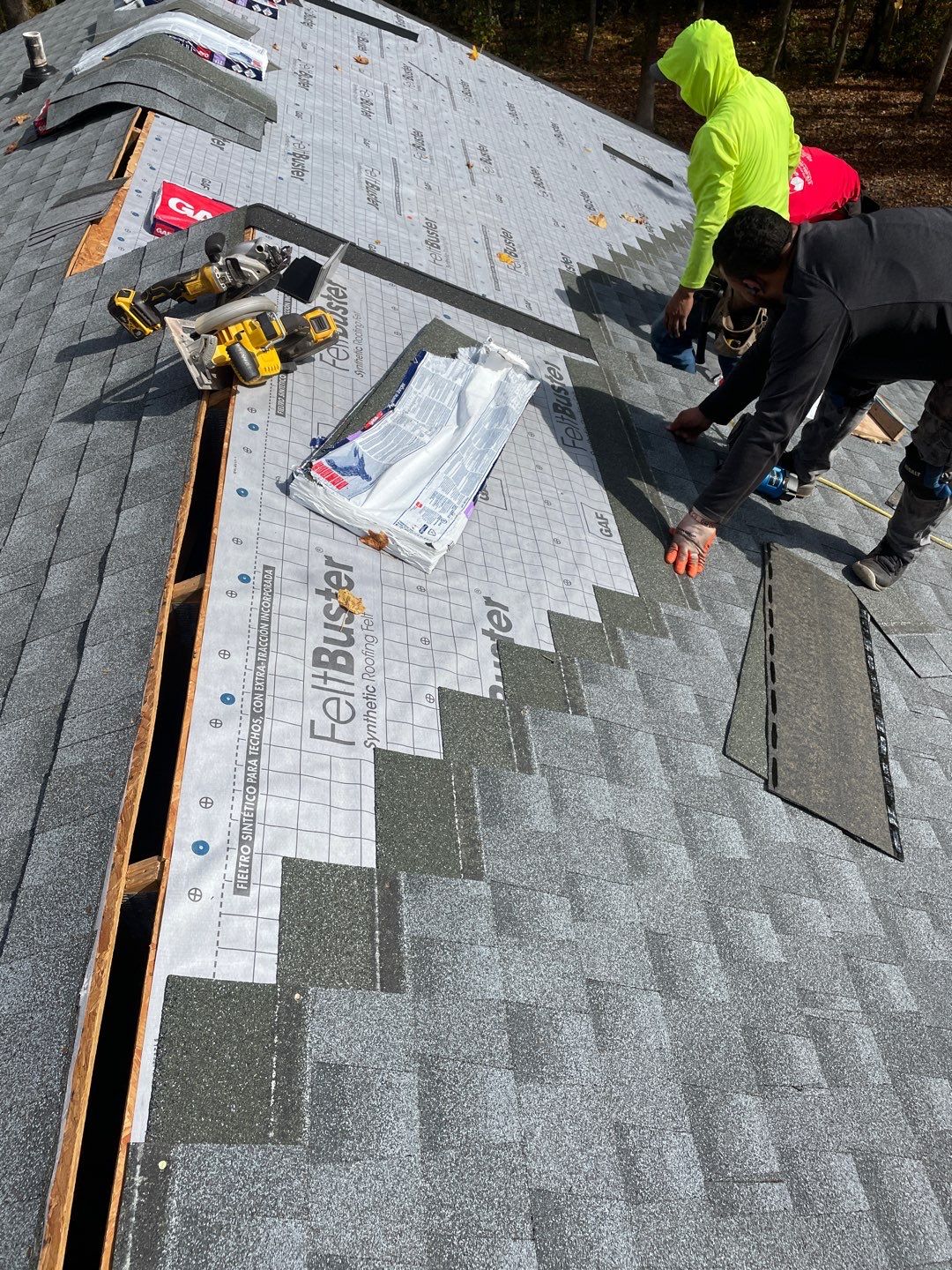Evaluating the Services Provided by Roofing Companies in Gainesville Florida
Finest Practices for Ensuring Appropriate Roof Covering Air Flow
Guaranteeing correct roof ventilation is essential for the longevity and effectiveness of a roof covering system. A well balanced consumption and exhaust air vent ratio, frequently 1:300, plays a pivotal duty, with consumption vents ideally positioned at the reduced edge of the roofing system for trendy air access and exhaust vents at the peak for warm air leave. Regular evaluations to identify blockages and keep clear air flow are critical. Furthermore, keeping insulation far from vents is important to avoid air flow restriction. Understanding these foundational aspects establishes the stage for more in-depth insights into setup and upkeep practices that can significantly boost your roof covering system's performance.
Understand Ventilation Fundamentals
Correctly understanding ventilation basics is vital for ensuring the longevity and efficiency of roof. Efficient air flow minimizes moisture accumulation and temperature extremes in the attic room, both of which can lead to significant architectural damages with time. A well-ventilated roof covering aids in preventing common problems such as mold growth, wood rot, and ice dams, which can compromise the stability of the roof covering products and the underlying frameworks.
The main objective of air flow is to promote the movement of air, enabling a constant exchange between the indoor and outdoor environments. This equilibrium is achieved via a combination of consumption and exhaust vents that work together to keep optimum airflow. Consumption vents, normally situated along the eaves or soffits, allow fresh air to enter the attic area, while exhaust vents, frequently situated at or near the roof ridge, allow warm, humid air to run away.
Secret variables affecting the efficiency of roof ventilation consist of proper placement, sufficient sizing, and making certain that both consumption and exhaust vents are unobstructed. Regular evaluation and maintenance are important to determine potential clogs, damage, or inefficiencies in the ventilation system, thus safeguarding the roofing system's efficiency and toughness.
Kinds of Roofing System Vents
Roof vents play a critical role in keeping efficient attic room ventilation and, by extension, the total health of the roof system. Different kinds of roof vents are available, each with one-of-a-kind benefits customized to details roofing requirements.

Soffit vents are installed under the eaves and work in tandem with roof covering vents to ensure a well balanced intake and exhaust system. By permitting cooler air to go into from below, soffit vents help with the expulsion of hot air via top vents. Gable vents, located on the exterior wall surfaces of the attic room, offer one more effective option, specifically in homes with saddleback roofs.
Examine Your Current Air Flow

Following, think about the age and condition of your roofing products and air flow parts. Older systems may not conform with current building ordinance or might have weakened with time, decreasing their effectiveness. Conduct a thorough exam to recognize any type of signs of wear and tear, such as corrosion, damages, or spaces that might endanger the system's performance.
Additionally, gauge the attic temperature level and humidity degrees. High temperatures and moisture can indicate inadequate air flow - roofing companies. Utilize a hygrometer and thermometer to acquire exact readings, comparing them with exterior conditions. Relentless discrepancies recommend potential problems that need attending to.
Installation Best Practices
Effective installation of roof air flow systems is vital for guaranteeing optimum efficiency and durability. Proper setup begins with comprehending the particular air flow demands of the roof covering and the structure it covers. This entails determining the right ratio of intake to exhaust vents, commonly sticking to the 1:300 rule, which specifies one square foot of air flow for every single 300 square feet of attic room floor space.

The placement of vents is equally critical. Intake vents ought to be set up at the roofing system's reduced side, commonly in the soffits, to allow amazing air to go into. Exhaust vents, on the various other hand, ought to be mounted near or at the roof covering's optimal to help with the leave of cozy, damp air. This develops a natural airflow that helps preserve more tips here temperature level and dampness equilibrium within the attic area.
Seal all vent links carefully to avoid air leakages and possible water infiltration. Use high-grade materials and follow producer guidelines to guarantee toughness and performance. Furthermore, integrating ridge vents with baffles can dramatically boost air flow performance by preventing wind-driven rainfall and snow from going into the attic.
Eventually, accurate setup of roofing air flow systems reduces prospective problems such as mold and mildew development, ice dams, and structural damages, making certain the roof's honesty and the structure's total health.
Routine Maintenance Tips
Consistency in maintenance methods is essential to making certain the long-term performance of roof covering ventilation systems. Regular assessments are vital, ideally performed biannually-- in the springtime and loss. Throughout these evaluations, ensure that vents are without debris, nests, and various other obstructions that could restrain air movement. Look for any kind of signs of dampness build-up or mold and mildew, as these can indicate inappropriate ventilation or leakages (gainesville fl roofing companies).
Utilize a soft brush or a vacuum cleaner to get rid of dust and debris from intake and exhaust vents. Be mindful not to damage the vent screens or louvers during the process.
Proper insulation is similarly important. Guarantee that attic insulation does not block the vents, as this can badly restrict air flow. If any insulation has actually shifted site here or cleared up, rearrange or replace it to preserve an effective barrier.
Lastly, replace any type of harmed or missing out on parts quickly. Busted vents, cracked shingles, or scrubby blinking can all add to inadequate ventilation and should be dealt with immediately. Regular upkeep makes certain that the roof covering air flow system works ideally, thereby extending the lifespan of the roofing itself.
Final Thought
Making certain proper roof covering air flow is paramount for maintaining the effectiveness and longevity of a roof covering system. Adherence to the 1:300 intake and exhaust air vent proportion, combined with the critical placement of vents, is necessary. Routine biannual inspections, debris cleaning, and ensuring insulation does not block airflow are crucial techniques. Carrying out these best methods will foster a well-ventilated roof, therefore mitigating potential problems related to moisture buildup and too much heat, inevitably prolonging the roofing system's life-span.
A well balanced intake and exhaust vent proportion, typically 1:300, plays a pivotal role, with consumption vents ideally put at the lower edge of the roofing system for cool air entry and exhaust vents at the optimal for warm air departure. Intake vents, click over here now usually located along the eaves or soffits, permit fresh air to enter the attic room area, while exhaust vents, frequently located at or near the roof ridge, make it possible for hot, damp air to get away.
Soffit vents are mounted under the eaves and work in tandem with roofing system vents to make sure a well balanced intake and exhaust system. By enabling cooler air to enter from below, soffit vents assist in the expulsion of warm air via top vents. Adherence to the 1:300 intake and exhaust vent ratio, combined with the calculated positioning of vents, is essential.